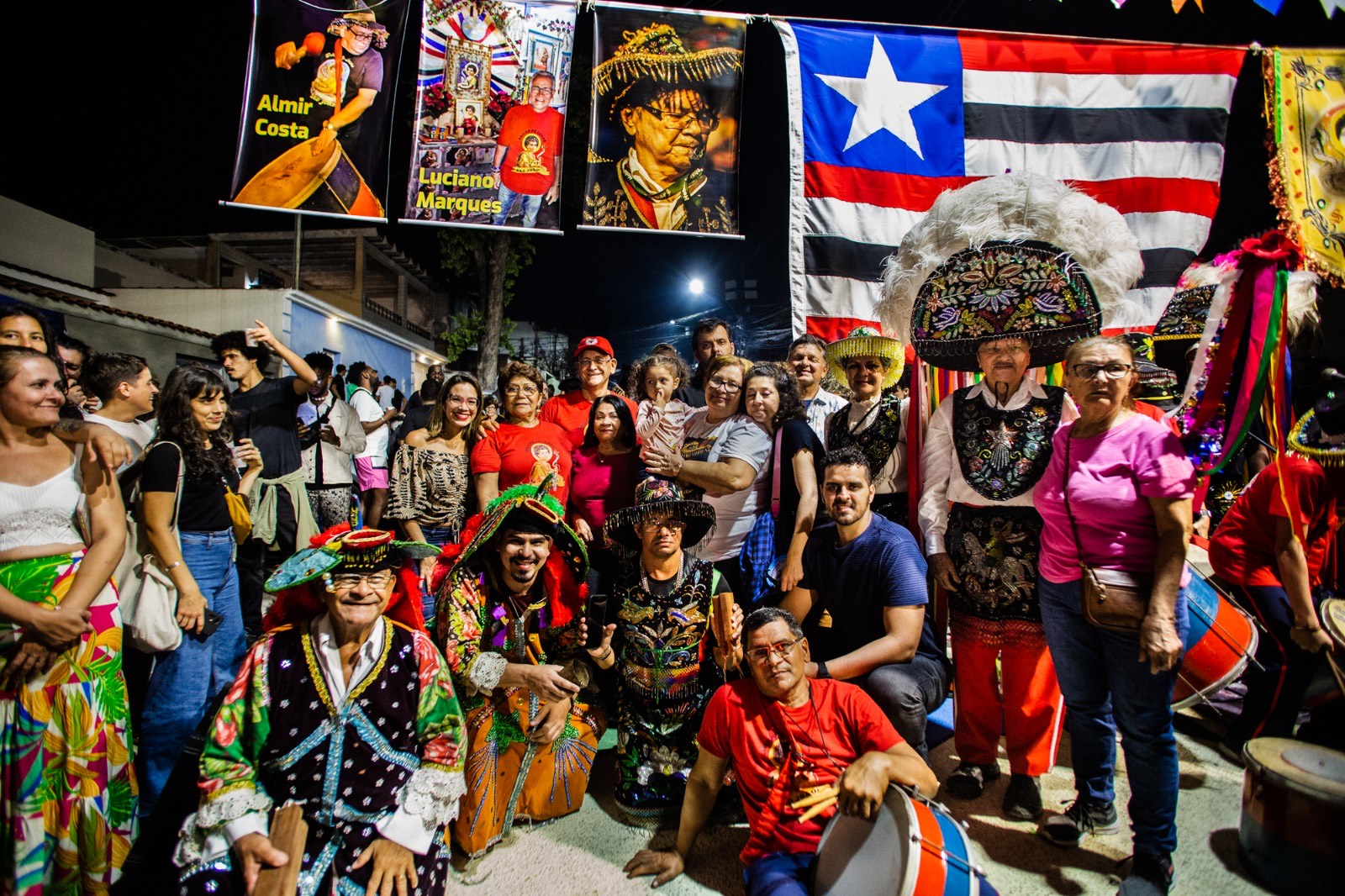
Clique aqui para Português
During the celebration of Brazil’s Folklore Day 2023, we learned more about how the residents of Parada de Lucas, in Rio de Janeiro’s North Zone, continue to breathe life into ‘bumba meu boi,’ a northeastern Brazilian, Black and indigenous folkloric expression, strongly tied to the saints associated with Brazil’s June Festivals.
The ‘matraca‘ and the ‘pandeiro‘ make the ground tremble… This heritage was left by our grandparents. Today, it is cultivated by us.”
The verses of this ‘toada’— song and harmony—trace back to the ancestral traditions of ‘bumba meu boi,’ a typical cultural tradition of Maranhão, a state in the Northeast of Brazil. However, even far away from Maranhão, the ‘toadas de boi’ also resonate in Rio de Janeiro’s peripheries, revived and sung by generations of northeastern migrants. In Parada de Lucas, in the city’s North Zone, the Bumba-meu-boi Brilho de Lucas Folklore Association revives the memories of Viana, a municipality in the interior of Maranhão. Founded in the 1980s by the Silva Costa family and today supported by the Rosa Castro family and friends, they work together to keep this manifestation of Black, indigenous and northeastern folklore alive in the ‘marvelous city.’
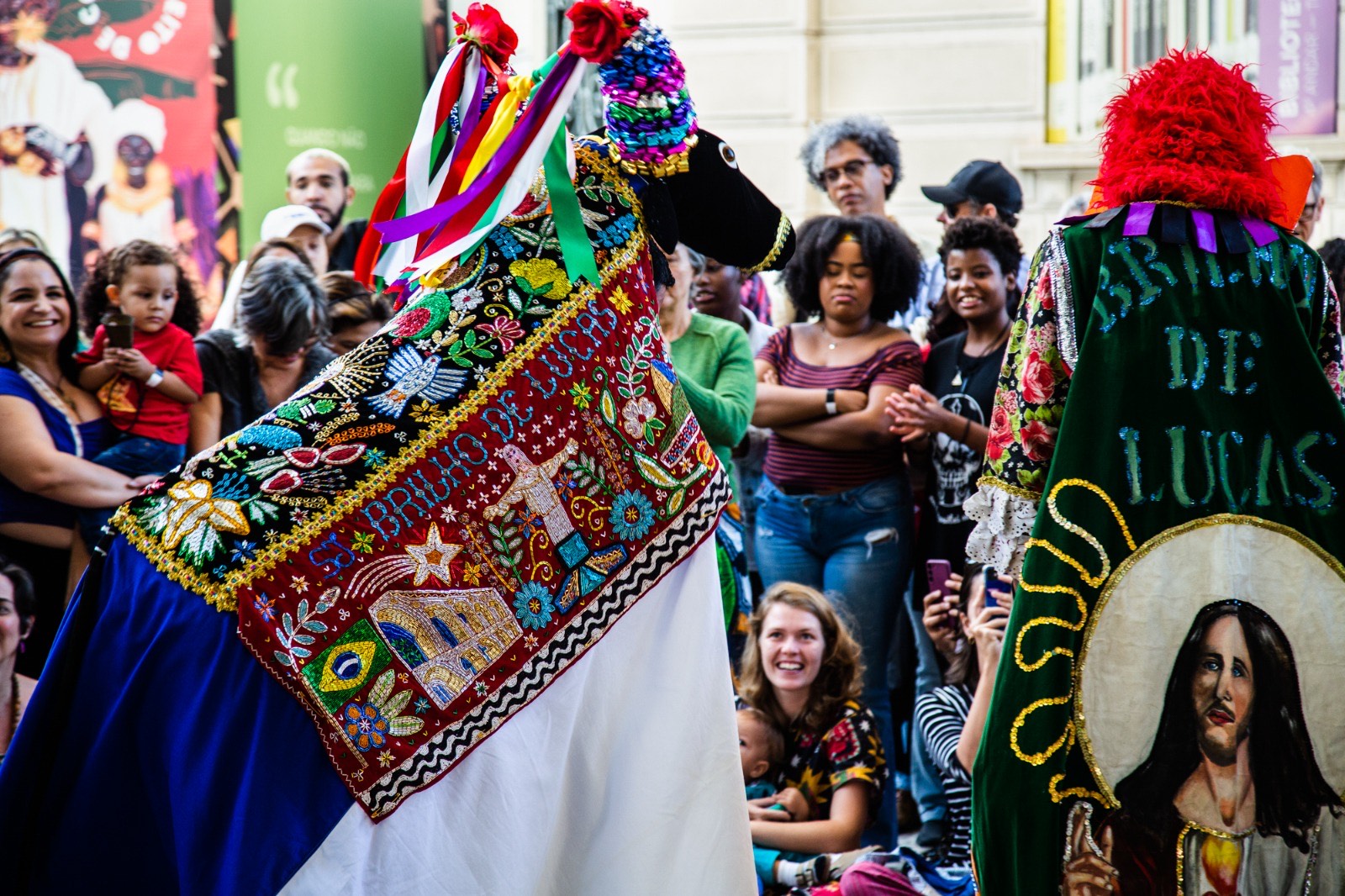
The Legend of ‘Bumba Meu Boi’
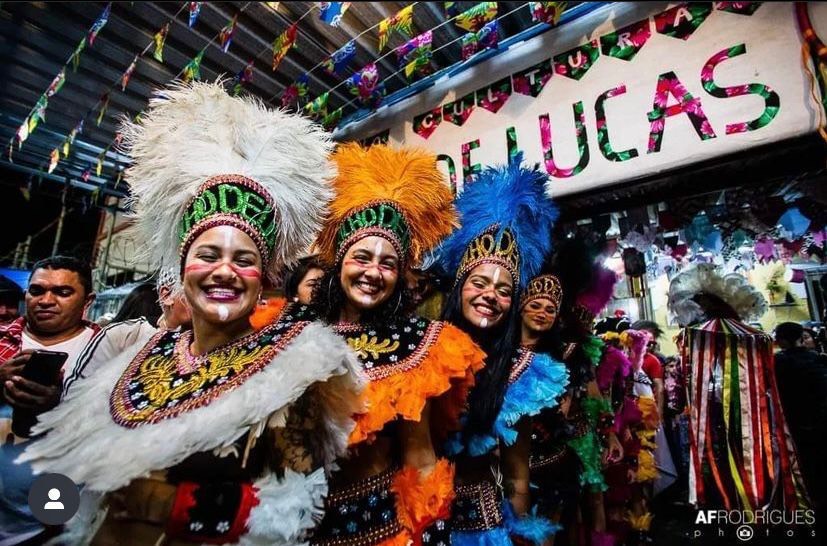
The manifestation of the ‘boi’ (ox) is woven into a narrative that traces back to the history of the Brazilian slave-holding period. According to the most widespread legend in Maranhão, Mother Catirina, while pregnant, longed to eat the tongue of the most beautiful ox on the farm. In a bid to fulfill his wife’s craving, Father Francisco takes the ox into the woods, extracts its tongue and presents it to her.
But soon after, Father Francisco is discovered by the foreman of the farm. He is then brought to the presence of the master, who threatens him with death unless the enslaved man can bring the ox back to life. To escape punishment, Father Francisco seeks the aid of cazumbás, indigenous friends and sorcerers, who perform a ritual around the animal, resurrecting it.
In some traditions, the forest dwellers breathe life back into the ox. In others, the son of Mother Catirina and Father Francisco is born with the ox’s tongue and implores his parents to approach the animal. He then blows on it, reviving the ox. The celebration is held to honor its resurrection.
‘Bumba meu boi’ celebrations in Maranhão unfold almost any time of year. They begin on Easter Saturday, when groups embark on initial rehearsals, extending until mid-June for round rehearsals. On June 23, the eve of Saint John’s Day, the oxen undergo baptism, seeking permission from the protector saint of the ‘bumbas‘ for the festivities. This Catholic ritual heralds the commencement of performances in the ‘arraiáis,’ which are the peak of June festivities for Maranhão’s folklore groups. Finally, from July to December, the oxen’s death rituals unfold, marking the conclusion of the ‘bumba meu boi’ festive cycle.
A Rio de Janeiro Toada: The Bumba-Meu-Boi Brilho de Lucas Folklore Association
The ‘toadas de boi’ found their way to the June Festivals of Parada de Lucas in Rio de Janeiro carried by a wave of Maranhão migrants. The tale of Brilho de Lucas began in 1982 when the Silva Costa family and friends from their homeland gathered in a backyard to nostalgically revel in their cultural heritage. Without aspirations to form a large group, they crafted a modest 30cm-tall, handmade ox. A bit of drumming, a few toadas sung, and thus began the journey of the Bumba-Meu-Boi Brilho de Lucas Folklore Association.
“It was more about getting friends and relatives together on weekends, with a tiny little ox, drumming on cans, buckets, and bottles; drinking beer and eating typical food. That was the initial reason. Then, in 1987, we decided to make an adult ox and take it to the streets, where the festival is still held today.” — Orlando Silva, president of Brilho de Lucas
The group, consisting of members from the Silva Costa and Rosa Castro families and friends, starts the preparations in April to assemble the pieces for the St. John’s Day festivities. Without a centralized headquarters for storing materials, the association maintains them spread across the homes of its members and performers.
“During this period, we check to see how the costumes are holding up and try to salvage some pieces. Many are very old, some are donated, some are bought, and others are handmade by my aunt Helena and my cousin Lívia.” — Filipe Costa, artist and member of Brilho de Lucas
The festival honoring St. John takes place annually on Rua Joaquim Rodrigues, in Parada de Lucas, featuring a comprehensive program to promote the appreciation of Brazilian popular culture. Since 2012, the event organized by Brilho de Lucas has become part of the official calendar of Rio de Janeiro festivities. The performances last around an hour and a half, drawing an audience of approximately 400 people each year.
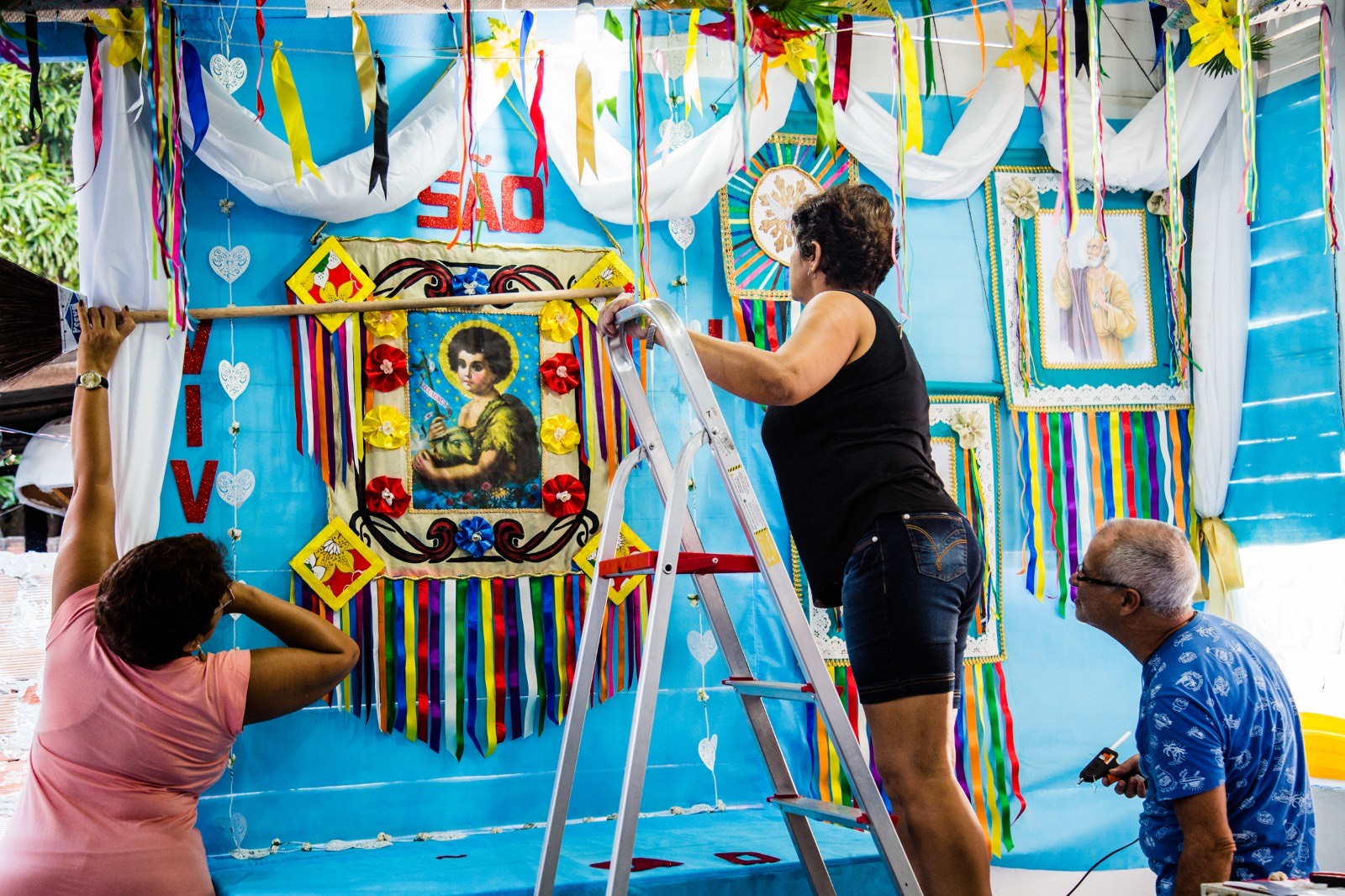
In 2023, the festival featured performances by the following groups: Boi Daqui, from Recife; Império Carioca; Aturiá Carimbó, from Belém in the state of Pará; Encanto Carioca; Boi Orquestra; and Coletivo As Três Marias, which plays Tambor de Crioula, another cultural expression of Maranhão origin. The Brilho de Lucas folklore group closed the event.
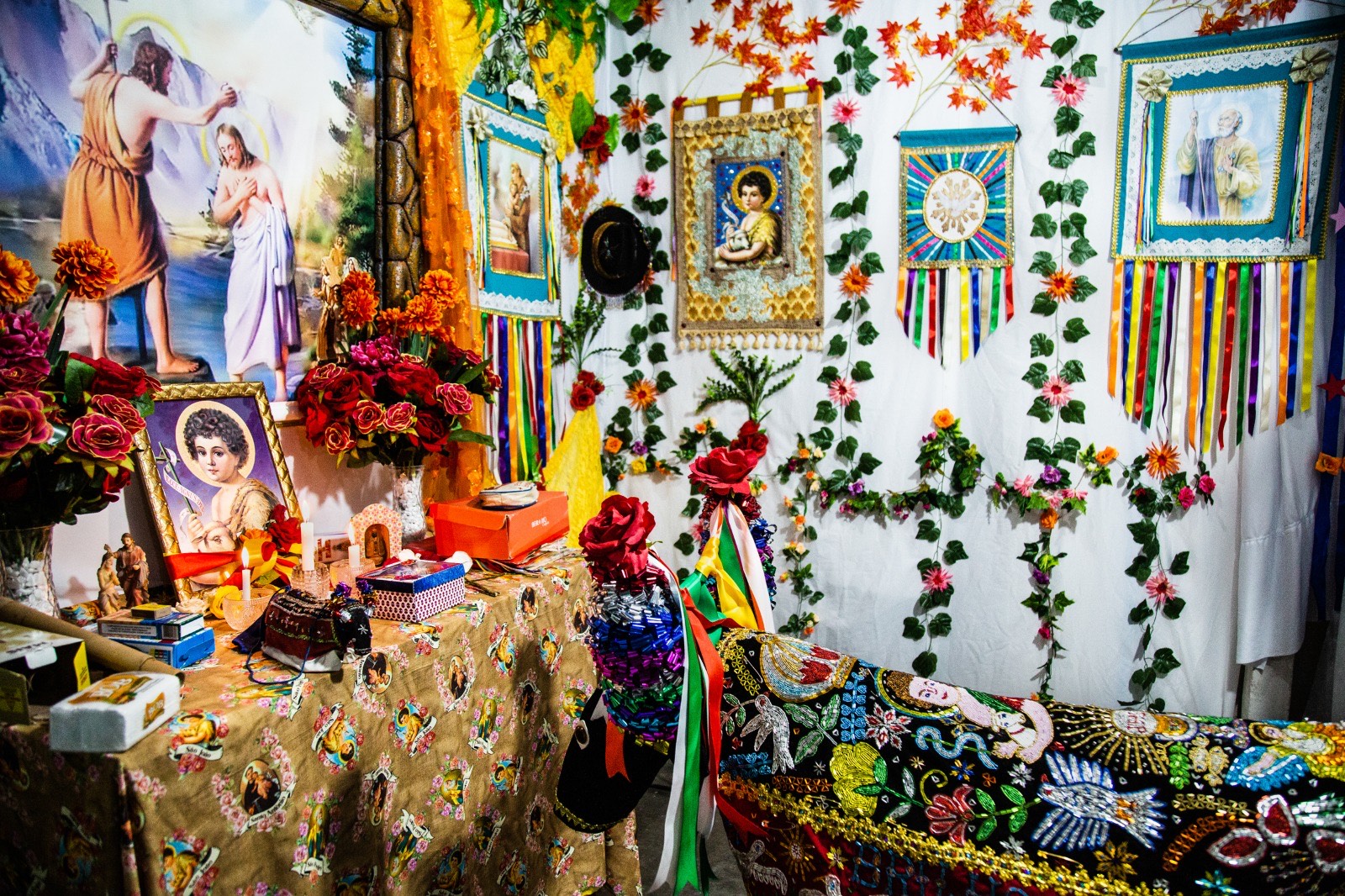
For Filipe Costa, the bumba meu boi festival is not just about spreading northeastern folklore in the southeast of the country; above all, it is a heartfelt effort to bring Maranhão closer to the ‘Maranhenses’ living in Rio, easing their homesickness.
“It’s like you unlock a memory… leaving a place where you were born and raised, venturing into a completely different one, trying to make a living like my family did when they came from Maranhão [it’s heavy]… so [with the bumba meu boi] you feel at home, you feel a bit less homesick.” — Filipe Costa
The Musicality, Accent and Dance of the Brilho de Lucas Group
Matracas (an instrument made of wood and a piece of iron), drums, surdos marcadores (large bass drums that hold the rhythm), tarol (a type of snare drum similar to the drums of samba schools, frevo and maracatu orchestras) and whistles are some of the instruments that make up the musicality of the Brilho de Lucas folklore group. Hailing from Viana, a municipality in the Baixada Maranhense, Brilho de Lucas’s ‘sotaque de boi‘ or its accent is the sotaque da Baixada, also known as ‘pandeirão.’ This arrangement sets the rhythm so that the members can play and dance to the sound of the toadas.
Orlando Silva points out that, in addition to the Baixada accent, there are four other types of accents in the state of Maranhão: orquestra accent, zabumba accent, boi da ilha or matraca accent and costa de mão accent. According to him, “each accent has its own sung toadas, which are played in a characteristic way.” In this manner, the combination of accent, attire and instruments of the performers makes each group unique.
When it comes to dance and corporality, the Brilho de Lucas folklore group performs its choreography in a counter-clockwise direction. This configuration relates to indigenous ancestry, which played a crucial role in shaping the bumba meu boi.
“Circularity is a way of honoring what is sacred to us. In the past, the indigenous people danced in circles to give thanks for the harvest. It’s a way of returning to the past. In the narrative of the ox, the spirits of nature are worshipped.” — Alice Costa, group member
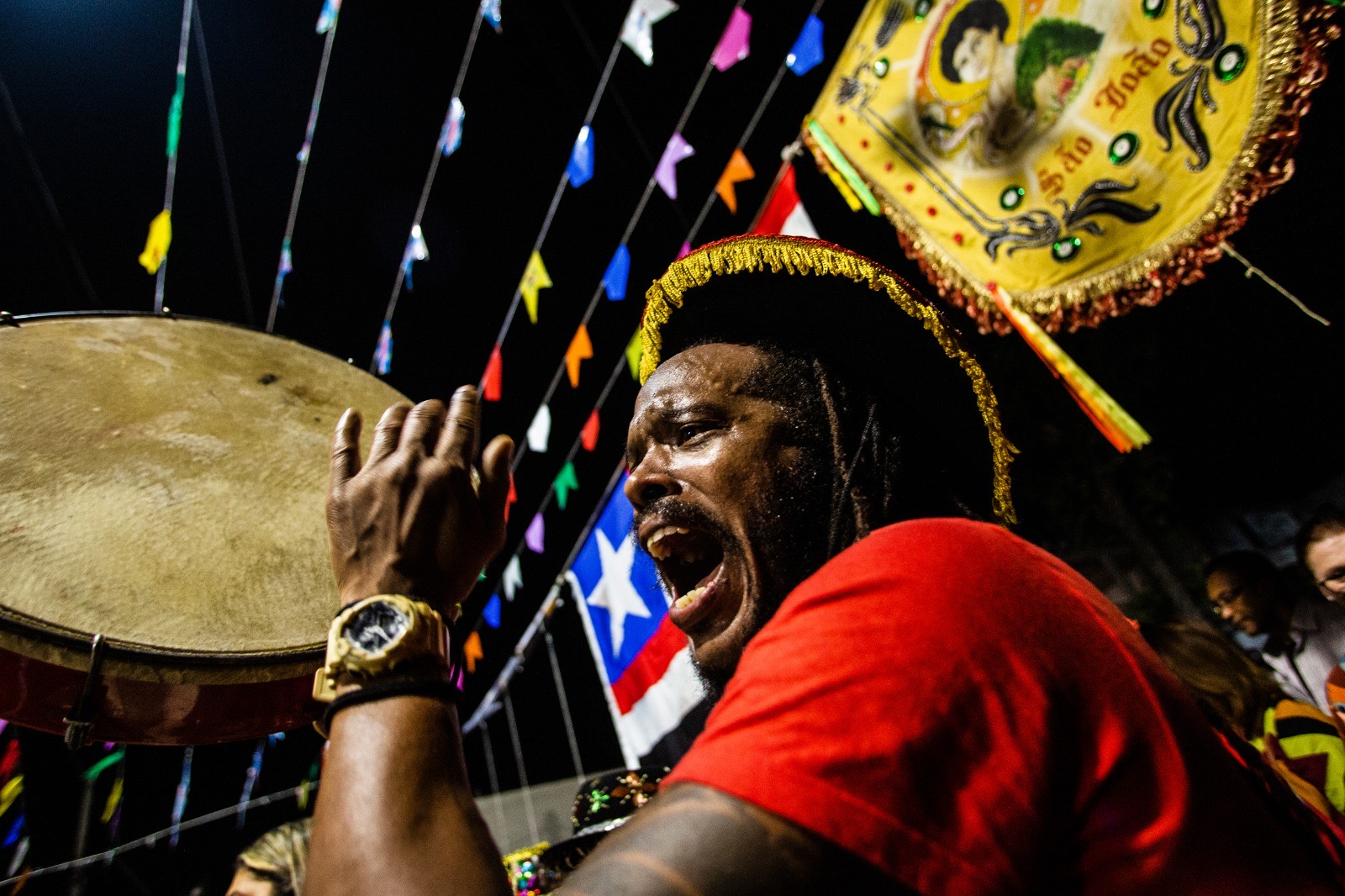
About the authors:
Carol Marinho was born and raised in Complexo do Alemão, holds a master’s degree in Ethnic-Racial relations, and is an educator and journalist.
Luana de Moraes has a Journalism degree from the Federal Rural University of Rio de Janeiro (UFRRJ) and a specialization in public management from the State University of Ponta Grossa (UEPG). She works as a freelance journalist, writer, and Web text editor.
